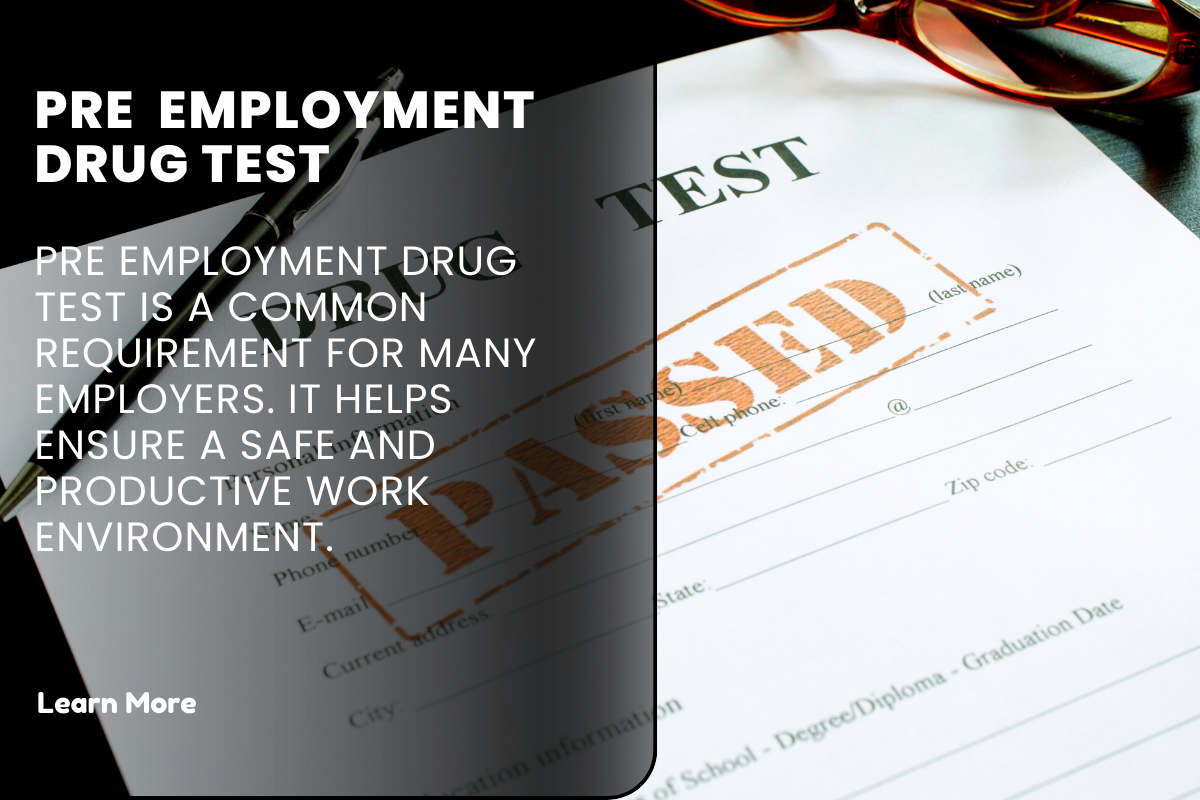
Understanding Pre-Employment Drug Tests
Pre-employment drug testing has become a standard part of the hiring process for many organizations across various industries. These tests serve to protect both the employer and employee by ensuring a safe, healthy, and productive work environment. As a vital component of employee screening, understanding the ins and outs of pre-employment drug tests is essential for both candidates and employers alike.
What Are Pre-Employment Drug Tests?
A pre-employment drug test is a method of screening that employers use to check if a job candidate is under the influence of drugs or alcohol. The test aims to detect any illegal substances or prescription drugs that could impair the potential employee’s ability to perform their duties safely and effectively. The results of the test are used as part of the decision-making process in hiring, with employers seeking to hire individuals who contribute positively to a drug-free workplace.
Why Are They Conducted?
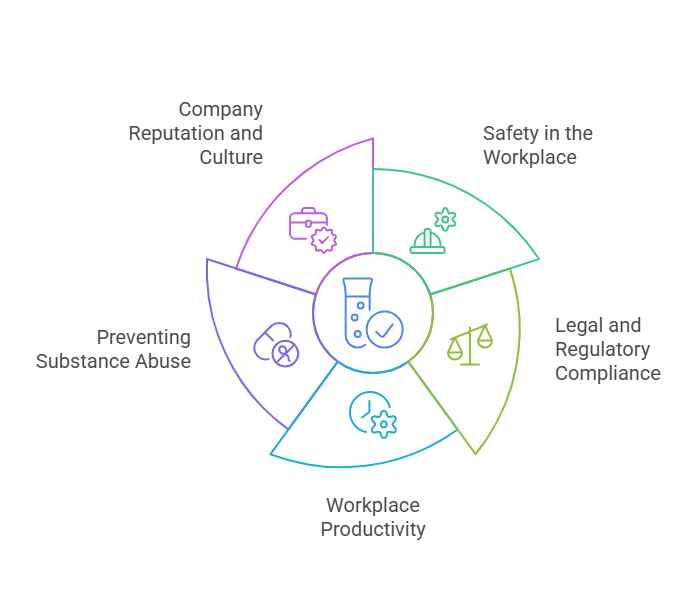
There are multiple reasons why employers conduct pre-employment drug tests. These tests help ensure a safe, productive, and reliable workforce, and in many cases, drug testing is required by law or regulation.
- Safety in the Workplace: The primary reason for drug testing is to prevent accidents caused by impaired employees. For example, in high-risk industries like construction, manufacturing, or transportation, the use of drugs can increase the likelihood of accidents. By ensuring that employees are drug-free, employers can help mitigate such risks and prevent injuries or fatalities in the workplace.
- Legal and Regulatory Compliance: Many industries, such as transportation, healthcare, and law enforcement, are subject to strict federal and state regulations regarding substance use. For example, drivers of commercial vehicles are required by the Department of Transportation (DOT) to undergo regular drug testing. Employers in such fields conduct pre-employment drug tests to comply with these legal requirements.
- Workplace Productivity: Drug use can significantly affect an employee’s performance, leading to decreased productivity, increased absenteeism, and a higher rate of errors. Ensuring that job candidates are free from drugs allows employers to maintain a more efficient and effective workforce, boosting overall organizational performance.
- Preventing Substance Abuse: Employers may also conduct drug tests to deter potential employees from engaging in substance abuse. The knowledge that drug testing is a part of the hiring process may discourage individuals with substance use issues from applying for jobs in the first place.
- Company Reputation and Culture: A drug-free workplace helps create a positive, healthy work environment. Companies that enforce drug testing policies often project an image of professionalism and integrity, which can be appealing to customers, business partners, and potential employees alike.
Types of Pre-Employment Drug Tests
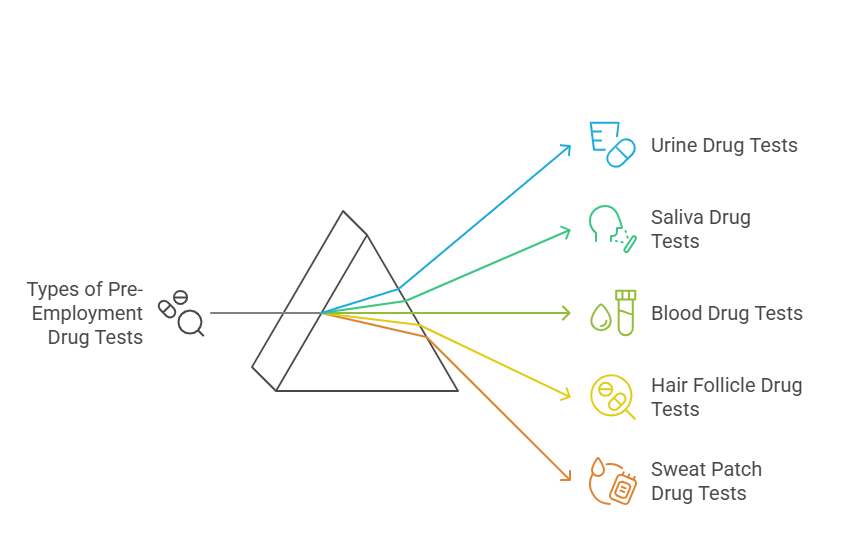
There are several types of drug tests that employers can choose from when screening job candidates. The choice of test depends on the employer’s needs, the type of job being filled, and the industry in which the company operates.
- Urine Drug Tests
Urine drug tests are the most common type of pre-employment drug screening. They are cost-effective, easy to administer, and highly effective at detecting a wide range of drugs. Urine tests can detect marijuana, cocaine, amphetamines, opiates, and other substances.- Accuracy: Urine tests have a high level of accuracy when performed by certified laboratories.
- Detection Window: Depending on the drug, substances can be detected in urine for up to 30 days.
- Administration: Candidates are required to provide a urine sample, which is then analyzed in a laboratory. The process is monitored to ensure that the sample is not tampered with.
- Saliva Drug Tests
Saliva tests are becoming increasingly popular due to their non-invasive nature and the ability to administer them on-site. These tests are typically used for random testing or post-accident screenings.- Accuracy: While less accurate than urine tests in detecting long-term drug use, saliva tests are effective at detecting recent drug use within the last 24 to 48 hours.
- Detection Window: Drugs are detectable in saliva for a relatively short time (usually within 1–2 days after use).
- Administration: The candidate provides a saliva sample, typically by swabbing the inside of the cheek. The sample is either analyzed on-site or sent to a lab for testing.
- Blood Drug Tests
Blood tests are more invasive and expensive than urine or saliva tests, but they are highly accurate and effective at detecting drugs in the bloodstream. These tests are typically used to determine current impairment, such as testing for alcohol use or other substances that could impair a candidate’s ability to work.- Accuracy: Blood tests are the most accurate and provide immediate results about whether a person is currently under the influence.
- Detection Window: These tests can detect drugs in the blood for a very short time, usually only a few hours to a day.
- Administration: A healthcare professional draws blood from the candidate, and the sample is then sent to a lab for analysis.
- Hair Follicle Drug Tests
Hair follicle testing is used to detect long-term drug use. This method involves testing a small sample of hair for traces of drugs.- Accuracy: Hair tests are highly accurate and can detect a history of drug use over a period of 90 days.
- Detection Window: Drugs remain detectable in hair for up to 90 days, making this test ideal for identifying past drug use rather than recent impairment.
- Administration: A small sample of hair, typically taken from the scalp, is cut and sent to a lab for testing.
- Sweat Patch Drug Tests
Sweat patch testing is a relatively new method of monitoring drug use. This method involves attaching a patch to the candidate’s skin, which collects sweat over a period of time.- Accuracy: Sweat tests are somewhat less effective at detecting specific drugs compared to other methods but can be useful for detecting ongoing drug use over an extended period.
- Detection Window: The sweat patch can detect drug use over several days or weeks, depending on the duration the patch is worn.
- Administration: The patch is worn for a period of time (typically 1–2 weeks) and is then sent to a lab for analysis.
Industries Where Pre-Employment Drug Testing Is Common
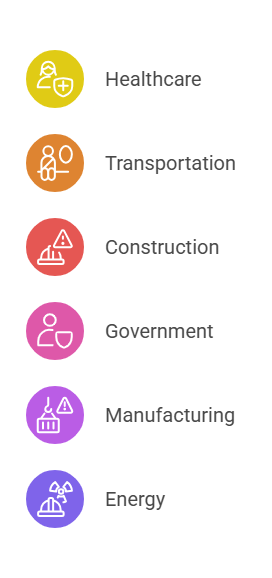
While pre-employment drug testing is used across various sectors, it is particularly prevalent in industries where safety, compliance, and productivity are top priorities. These include:
- Healthcare: Given the sensitive nature of healthcare work, including patient care and the operation of medical equipment, many healthcare organizations require pre-employment drug testing. Ensuring that healthcare workers are drug-free helps reduce the risk of errors, accidents, and negligence that could compromise patient safety.
- Transportation: The transportation industry is one of the most heavily regulated when it comes to drug testing. Drivers of commercial vehicles, pilots, train operators, and other transportation employees are subject to strict drug testing policies to ensure safety on the roads and in the air.
- Construction: Workers in the construction industry are often required to undergo drug testing to reduce the risk of workplace accidents. Construction sites are hazardous environments where even a small mistake due to impaired judgment can lead to significant injuries or fatalities.
- Government and Public Sector: Many government positions, especially those that involve law enforcement, national security, or the military, mandate drug testing as part of the hiring process. The goal is to maintain the integrity and safety of public service.
- Manufacturing and Warehousing: The manufacturing and warehousing sectors often require drug testing due to the physical nature of the work and the heavy machinery involved. Drug testing helps ensure that employees can operate machinery safely and maintain a high level of productivity.
- Energy and Utilities: Employees in the energy and utilities industries, particularly those working in high-risk areas such as oil rigs or nuclear plants, are also frequently drug tested to avoid accidents and ensure the safe operation of critical infrastructure.
The Importance of Drug Testing in a Competitive Job Market
In today’s highly competitive job market, drug testing has become an essential part of the hiring process. As more companies realize the value of a drug-free workplace, candidates who are able to pass pre-employment drug tests stand out as responsible and reliable professionals. For job seekers, understanding the importance of these tests and being prepared for them can make a significant difference in landing a job.
The Process and Benefits of Pre-Employment Drug Testing
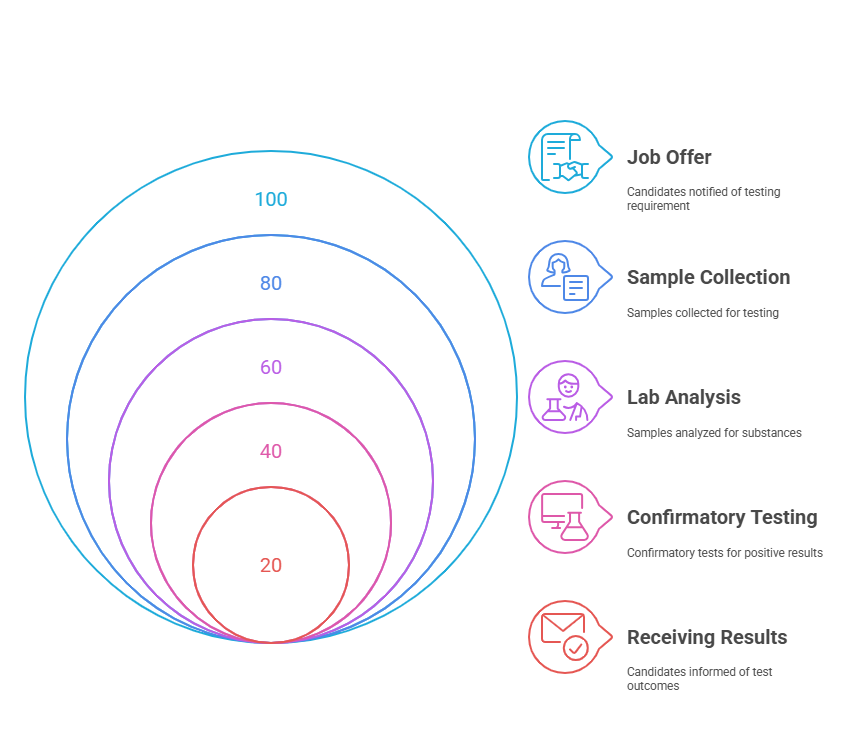
Pre-employment drug testing plays a critical role in the hiring process, offering numerous benefits for both employers and employees. Understanding how these tests are conducted, the advantages they offer, and addressing common concerns can help both parties navigate this essential aspect of recruitment.
How Are Pre-Employment Drug Tests Scheduled and Conducted?
The process of pre-employment drug testing typically follows a set procedure to ensure fairness, consistency, and compliance with legal standards. Here’s a breakdown of how the process generally unfolds:
- Job Offer and Notification
Drug testing is usually required after a job offer has been extended to a candidate, but before employment begins. Once a company has selected a candidate for the position, the offer may be contingent upon passing a drug test. The candidate is informed about the drug testing requirement, and an appointment is scheduled for the test. - Selection of Testing Method
Employers can choose from various drug testing methods depending on the nature of the job, industry requirements, and budget. Typically, urine tests are the most common, but employers may choose other methods such as saliva, hair follicle, or blood tests. The type of test used is often specified during the job offer phase. - Sample Collection
On the day of testing, the candidate is instructed to visit a designated testing facility. In some cases, on-site testing may be available. During this phase, a sample (urine, saliva, blood, or hair) is collected. If a urine sample is required, candidates may be asked to provide the sample in a private setting to prevent tampering. - Lab Analysis
Once the sample is collected, it is sent to a certified laboratory for analysis. The lab checks for the presence of illegal substances, prescription drugs, or alcohol, depending on the type of test. If the results are negative, the candidate is cleared to proceed with the hiring process. If the results are positive, further steps may be required, such as a confirmatory test or an explanation from the candidate. - Confirmatory Testing
In the event of a positive result, most employers will require confirmatory testing. This is done using a more specific method, such as gas chromatography-mass spectrometry (GC-MS), to ensure the accuracy of the result. If the candidate’s test is still positive after confirmatory testing, the employer may proceed with withdrawing the job offer. - Receiving Results
Employers typically receive the results within a few days to a week after the test. The candidate is then informed of the outcome, and if the results are negative, they can proceed to the next steps in the hiring process. In case of a positive result, employers may provide an opportunity for the candidate to explain or contest the findings.
Benefits of Pre-Employment Drug Testing
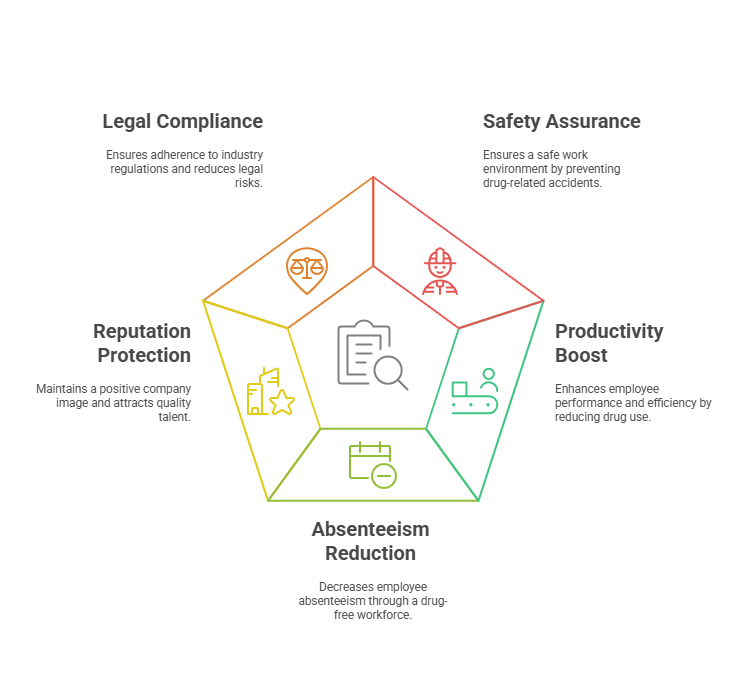
Pre-employment drug testing offers significant benefits for both employers and employees. Understanding these advantages is crucial for recognizing why such tests are so widely implemented.
- Ensuring a Safe Work Environment
Safety is one of the primary concerns for employers when it comes to drug testing. Employees who use drugs may pose safety risks, especially in industries that require operating heavy machinery, driving vehicles, or working with hazardous materials. By ensuring that candidates are drug-free, employers reduce the chances of workplace accidents and injuries.In sectors such as transportation and healthcare, where even small mistakes can have serious consequences, pre-employment drug testing becomes a critical measure in maintaining public and employee safety. - Increasing Workplace Productivity
Drug use is often linked to lower levels of work performance. Employees who use substances may experience reduced concentration, memory, and cognitive abilities, leading to errors and missed deadlines. Drug-free employees, on the other hand, are more likely to be focused, alert, and productive. Employers benefit from a workforce that is more efficient, reliable, and capable of achieving organizational goals. - Reducing Absenteeism
Drug use can contribute to increased absenteeism as individuals may struggle with addiction or experience the physical and mental tolls of drug use. Employees who are free from drugs tend to have better attendance, leading to greater consistency in work performance. Employers can rely on their workforce to show up on time and contribute to the success of the company. - Protecting Company Reputation
Companies that maintain a drug-free workplace project an image of professionalism and integrity. Drug testing is an essential tool in building a positive reputation among customers, business partners, and stakeholders. Organizations that enforce drug-free policies are more likely to be perceived as responsible, ethical, and committed to employee well-being.Furthermore, a drug-free workplace is more likely to attract high-quality candidates who seek a safe and professional work environment. This contributes to better talent acquisition and employee retention. - Reducing Legal Liability
In certain industries, drug testing is not only a company policy but a legal requirement. Failing to conduct proper drug screening can expose employers to legal risks, including fines and penalties. For example, transportation companies and healthcare providers that fail to comply with drug testing regulations may face severe consequences. By implementing pre-employment drug testing, employers reduce the risk of legal liabilities and ensure compliance with industry-specific regulations. - Promoting Fairness in Hiring
Drug testing helps create a level playing field for all candidates. By screening for drug use, employers can ensure that candidates are evaluated based on their skills, experience, and qualifications rather than being influenced by potential substance abuse. This promotes fairness and equal opportunity in hiring practices. - Supporting Employee Health and Wellness
Some employers view pre-employment drug testing as part of a larger strategy to promote employee health and wellness. By ensuring that candidates are drug-free, employers contribute to creating a healthier and more supportive work environment. In certain industries, drug testing can also be a part of employee wellness programs, helping to identify individuals who may need assistance in addressing substance abuse issues.
Addressing Common Concerns About Pre-Employment Drug Testing
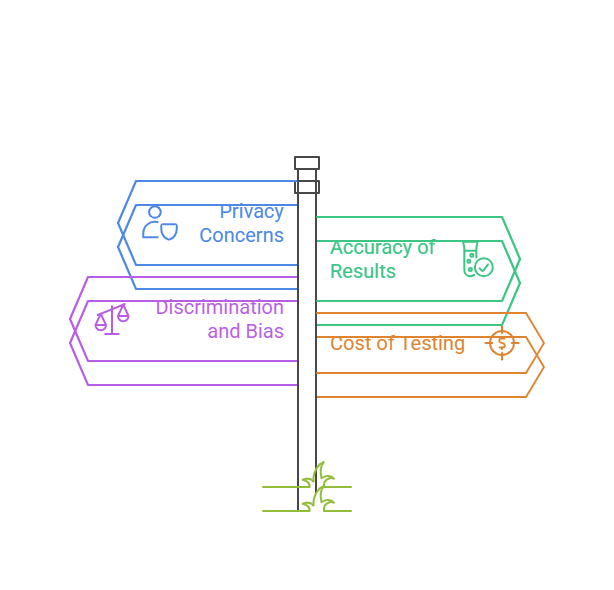
While pre-employment drug testing offers many advantages, it is not without its challenges and concerns. Some of the most common issues include:
- Privacy Concerns
One of the most frequently cited concerns regarding pre-employment drug testing is the potential invasion of privacy. Candidates may feel uncomfortable with having their bodily fluids tested or worry about their personal information being shared. However, employers are required to adhere to strict privacy laws to protect the confidentiality of the test results. In many cases, drug test results are only shared with authorized personnel within the organization. - Accuracy of Results
Another concern is the accuracy of drug test results. False positives can occur due to a variety of factors, such as cross-reactivity with other medications or certain foods. To minimize this risk, employers often use confirmatory testing methods that are more specific and reliable. - Discrimination and Bias
Some candidates may worry that drug testing could be used to discriminate against them unfairly, particularly if they are in recovery from substance abuse or have a history of drug use. Employers must ensure that their drug testing policies are applied fairly and consistently to avoid allegations of discrimination. Many organizations also offer rehabilitation programs to support employees in overcoming substance abuse issues. - Cost of Drug Testing
Drug testing can incur costs for employers, particularly if they are conducting tests on a large number of candidates. However, many employers view drug testing as an investment in the long-term health and productivity of their workforce. Some companies even outsource their drug testing to third-party service providers to streamline the process and reduce costs. - Impact on Candidate Experience
Candidates may view drug testing as an obstacle or an invasive step in the hiring process. To mitigate this concern, employers should communicate clearly about the drug testing requirements and ensure that the process is conducted professionally and efficiently. Providing candidates with information about the testing procedure and its purpose can help set expectations and reduce anxiety.
Overview of RapidHireSolutions’ Drug Testing Services
At RapidHireSolutions, we understand the critical importance of pre-employment drug testing in the hiring process. Our comprehensive screening services include a wide range of testing options, from urine and saliva tests to hair follicle and blood tests. We work closely with employers to ensure that their drug testing policies are tailored to their specific needs and comply with all applicable regulations.
In addition to drug testing, we offer a full suite of employment screening services, including background checks, reference checks, and skills assessments. Our goal is to help employers make informed hiring decisions while maintaining a fair, consistent, and legal screening process.
Comparing Different Drug Test Types, Costs, and Effectiveness
| Test Type | Cost | Detection Window | Accuracy | Common Use |
|---|---|---|---|---|
| Urine Test | Low | 1–30 days | High | Most common for general employment screening. |
| Saliva Test | Moderate | 1–2 days | Moderate | Ideal for recent drug use detection. |
| Blood Test | High | A few hours | Very High | Used to detect current impairment. |
| Hair Follicle Test | High | Up to 90 days | Very High | Used for long-term drug use detection. |
| Sweat Patch | Moderate | 1–2 weeks | Moderate | Used for ongoing monitoring of drug use. |
Legal Aspects, FAQs, and Conclusion
Pre-employment drug testing involves navigating legal landscapes to ensure compliance with both local and international regulations. Employers must also be mindful of the privacy rights of candidates and establish ethical testing practices. This section will explore the legal framework surrounding pre-employment drug tests, address frequently asked questions, and provide a conclusion that reinforces the importance of implementing proper drug testing protocols.
Legal Considerations and Compliance Requirements
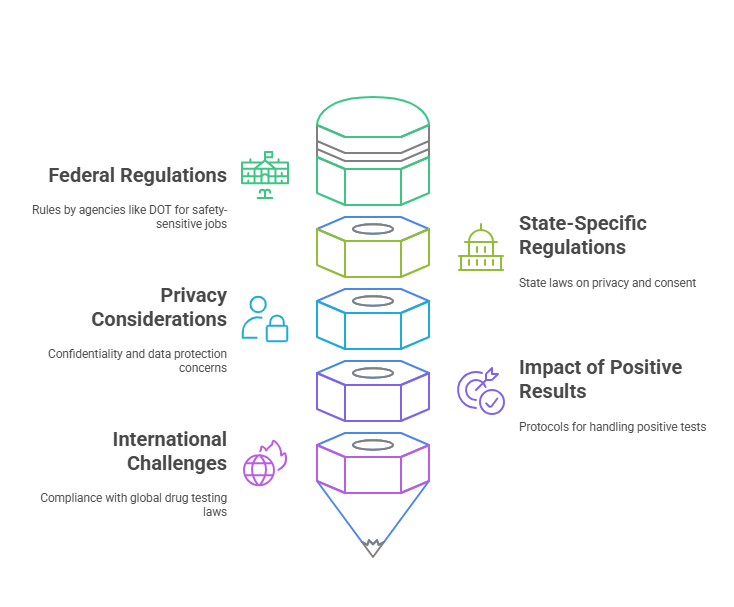
The legality of pre-employment drug testing varies by jurisdiction, and employers must comply with both federal and state or regional laws. Understanding these regulations is critical to conducting drug tests in a manner that is both lawful and fair to candidates.
- Federal Regulations in the United States
In the United States, several federal regulations govern pre-employment drug testing, especially for employees in safety-sensitive positions. The Department of Transportation (DOT) has specific rules for drug testing in industries such as trucking, aviation, and public transportation. Employers in these sectors are required to conduct drug tests for prospective employees, particularly those involved in safety-sensitive tasks. The testing must be conducted before employment begins and at various points during employment.
In addition to DOT guidelines, The Americans with Disabilities Act (ADA) prohibits discrimination against individuals with disabilities, including those who may be in recovery from substance abuse. However, the ADA allows drug testing and does not protect employees who are actively using illegal substances. Employers must ensure they do not violate these rights while enforcing drug-free policies.
- State-Specific Regulations
Each state in the U.S. has its own regulations regarding drug testing. Some states, like California and Nevada, have specific rules about employee privacy and consent before drug testing can occur. Employers in these states may be required to provide written notice of their drug testing policies and obtain explicit consent from candidates before testing. Conversely, other states have no specific regulations governing drug testing but generally allow it as long as it is consistent with federal law.
- Privacy and Ethical Considerations
Privacy is a critical concern in pre-employment drug testing. Candidates may have concerns about how their personal information and test results are handled. Employers must ensure that drug test results are kept confidential and only shared with authorized personnel. Additionally, some countries and regions, like the European Union, have strict regulations regarding employee privacy. Under the General Data Protection Regulation (GDPR), employers are required to handle employees’ personal data responsibly, including any data related to drug testing.
Employers should also be transparent about their testing policies and ensure that they are applied consistently across all candidates to avoid accusations of discrimination or bias.
- The Impact of Positive Results
If a candidate tests positive for drugs, the employer may decide not to move forward with the hiring process. However, the employer must follow established protocols, which often include offering the candidate an opportunity to explain the results or undergo additional confirmatory testing. Many companies also implement rehabilitation programs to assist employees who are struggling with substance abuse issues.
In some regions, candidates may have the right to contest positive test results, especially if they can demonstrate that the drugs were prescribed by a healthcare provider or were legally used.
- International Considerations
International employers face additional challenges when it comes to drug testing. Countries have varying regulations regarding what substances can be tested for and how the testing is conducted. For instance, in some countries, it is illegal to test for certain substances unless there is a suspicion of impairment. In others, drug testing may be mandatory for all employees. Therefore, multinational companies must be careful to adhere to the specific regulations in each country where they operate.
Employers should consult with legal professionals to ensure their drug testing policies comply with local, national, and international laws.
Frequently Asked Questions (FAQs)
What happens if I fail a pre-employment drug test?
If a candidate fails a pre-employment drug test, the employer typically rescinds the job offer. However, some employers may provide candidates with an opportunity to explain the results or undergo confirmatory testing. In certain cases, the employer may also offer a second chance or direct the individual to a rehabilitation program, especially if the positive result was related to prescription medication.
Can I be tested for drugs after I’ve been hired?
Yes, some employers may require random drug testing during employment or after specific events, such as workplace accidents or incidents. In safety-sensitive positions, periodic drug testing may be a condition of employment. Employers generally have the right to implement such policies, as long as they are clearly outlined in the company’s employee handbook or agreement.
How long does a pre-employment drug test take to process?
The processing time for a pre-employment drug test typically takes between 1 and 7 days, depending on the type of test and the laboratory’s workload. Urine tests often return results faster than hair follicle tests, which can take several days for analysis. Confirmatory tests, such as gas chromatography-mass spectrometry (GC-MS), may take longer.
Can an employer test for alcohol during pre-employment drug screening?
Employers can test for alcohol in certain circumstances, especially for safety-sensitive jobs. Alcohol testing is often conducted using breathalyzer devices or blood tests. In many cases, alcohol testing is included as part of a broader pre-employment drug screening to ensure candidates are not under the influence of any substances that could impair their performance.
Are there any alternatives to pre-employment drug testing?
While pre-employment drug testing is a common and effective method of screening candidates, some employers may choose alternatives such as background checks, psychological evaluations, or interviews focused on substance abuse. However, drug testing remains the most reliable way to identify recent drug use and ensure a safe and productive work environment.
Conclusion
Pre-employment drug testing is a valuable tool for employers seeking to ensure a safe, productive, and compliant workforce. By understanding the types of tests available, the legal requirements surrounding them, and the benefits they offer, employers can make informed decisions that contribute to the long-term success of their organization.
The process of drug testing, while it may raise some concerns among candidates, is critical for reducing workplace accidents, improving productivity, and maintaining a healthy and professional environment. As the job market becomes increasingly competitive and companies place a premium on workplace safety, the role of drug testing in hiring will continue to be an essential part of the employment process.
Employers must, however, be mindful of privacy issues, legal considerations, and ethical concerns to ensure that drug testing is carried out fairly and consistently. Clear communication about testing policies and the use of ethical practices will help build trust between employers and potential employees, ensuring that the screening process is transparent and effective.
At the same time, candidates should understand that drug testing is often an inevitable part of the hiring process, especially in industries that prioritize safety, compliance, and performance. Being prepared for drug testing and understanding the reasons behind it can help candidates navigate this process smoothly and enhance their chances of securing the job.
In conclusion, pre-employment drug testing is not just a formality—it is a necessary step in building a responsible, reliable, and safe workforce that benefits both employers and employees.
